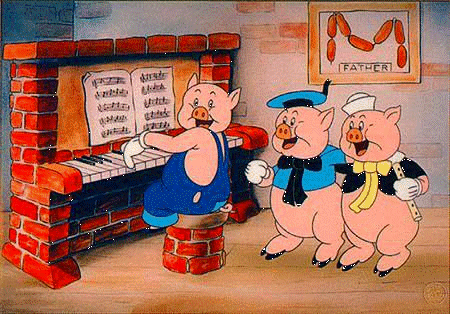

|
|
|
|
|
Subject: Heat Transfer
Grade Level: Elementary
Abstract: A group of students from the Oneida Elementary School researched heat transfer by building a structure using straw bale walls. The students discovered the variety of materials used for insulation of structures around the world. The students worked with the Oak Ridge National Laboratory in the project and learned of the value of research, collecting data and comparing data.
Learner Description/Environment: The students live in a rural area. There are 22 - 4th graders and 23 - 5th graders. There are mixed socio-economic levels with the students. The school policy for special needs students is based on inclusion, there are special needs students in all classes.
Time Frame: The first part of the project involved a six week grading period consisting of three 50 minutes classes per week for combined classes . The second part of the project took place in the spring after testing. The students spent a week with the actual building of the structure.
Rationale: Students will discover the importance of heat transfer, conduction of heat through different materials. Students will recognize that some materials are good conductors of heat and some materials are good insulators for heat. Students will discover the use of the Internet as a research tool. The Internet allows the students to research not only the ancient practices in building structures, as well as the latest practices available today.
Learner Outcomes: The students will :
· Develop an inquisitive mind and the effective use of questioning techniques.
· Analyze data to find patterns and relationships that may suggest cause and effect or support inferences.
· Share and disseminate the results in a clear and concise manner
· Understand the principal of conduction.
· Understand the properties of heat.
· Understand the kinds and forms of energy.
· Understand how heat is produced, measured and used.
Alignment with Standards:
State and National Standards found at:
4th
Grade Standards
5th
Grade Standards
Structure of the Learning:
Content: The students developed plans to build a straw bale wall fort. The Internet was used as a research tool to locate new information not available in our library. The students will be assessed on their ability to work together and design and build a straw bale wall fort They will also be assessed on their list of gathered URL's concerning Straw Bale Walls, building materials, and heat transfer. There presentations, logs, and reports are also going to be assessed.
Process: The students worked in cooperative groups brainstorming ideas about heat transfer. They also worked together to find sites on building materials. They composed letters to local farmers to ask about straw. They built a fort. The teachers assisted the students in their search for information.
Product: Students discovered the various materials available for building structures and completed a structure of Straw Bale Walls. The use of technology allowed the students the most recent information on Straw Bale Walls and the access to scientist working with experiments on straw.
Assessment: The students developed a rubric for the project involving individual logs and reports. The group assessment was based on the presentations and group reports.
Project/Unit Evaluation: The project was successful with the presentation of different plans drafted for the structure were based on sound scientific and engineering thought. The students gained confidence in in their ability to use the Internet. Their technology skills vastly improved.
The building is still standing!
Created for the NTEP II Fermilab LInC program sponsored by Fermi National Accelerator Laboratory Education Office and Friends of Fermilab, and funded by United States Department of Energy, Illinois State Board of Education, North Central Regional Technology in Education Consortium which is operated by North Central Regional Educational Laboratory (NCREL), and the National Science Foundation.
Author(s): Mike Kiernan, Barbara Shoemaker, Donna Tompkins School: Oneida Elementary, Oneida, Tennessee Created: November 1, 1998 - Updated: December 9, 1998 URL: /ntep/f98/projects/ornl/present.html